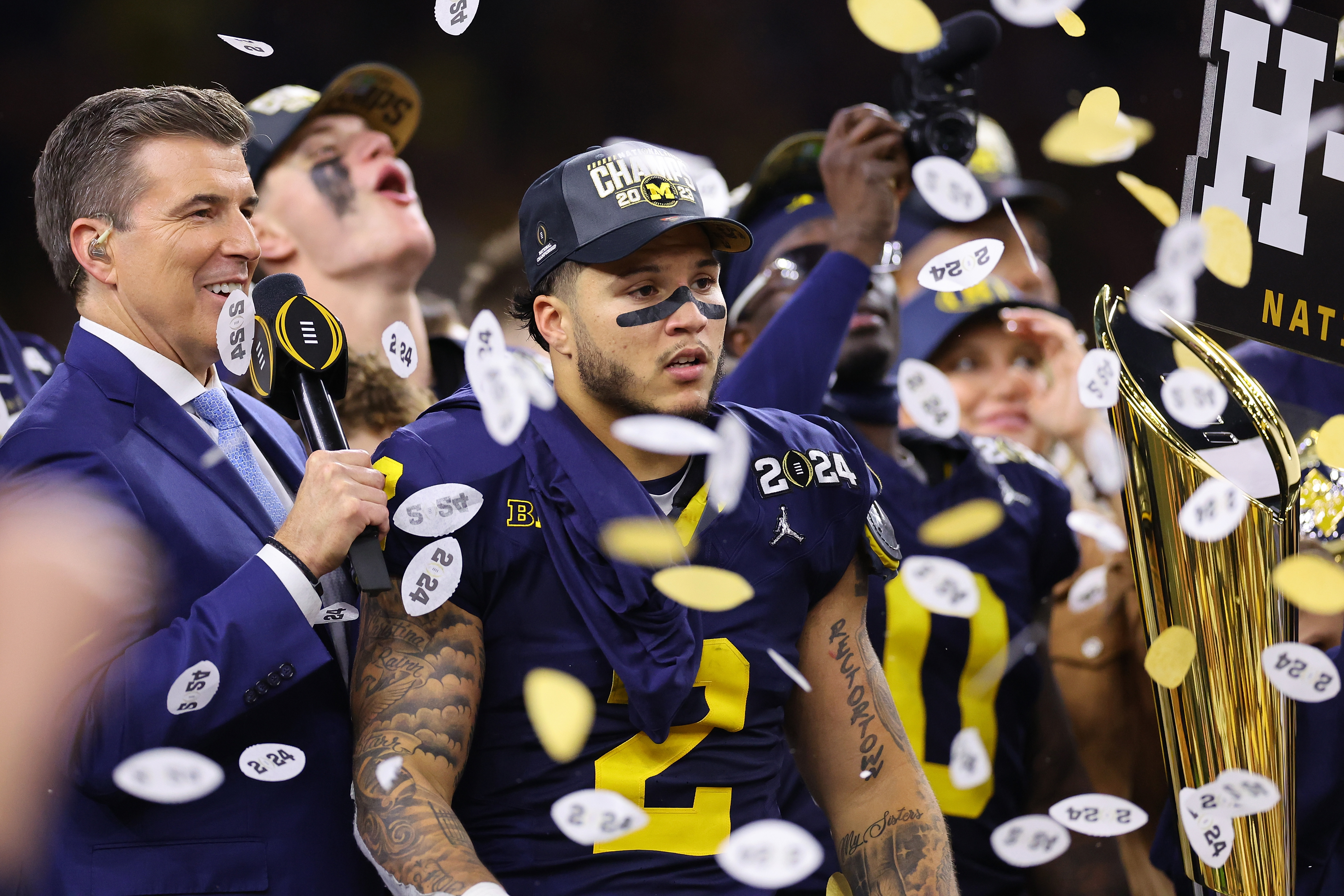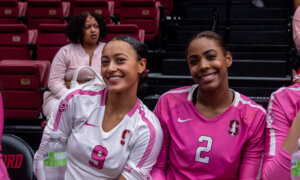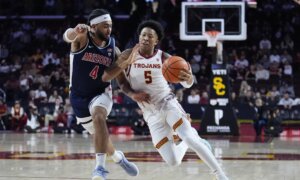Even before the expanded College Football Playoff has been put into play, the sport’s powers that be are considering the prospect of further increasing the number of schools that will participate.
The four-team playoff, which produced a national championship for the University of Michigan on Jan. 8, will grow to 12 the next two seasons. After that, who knows?
Smart money is on an even larger playoff field, 14 teams or perhaps even 16, beginning with the 2026 campaign. While Bill Hancock, executive director of the College Football Playoff, did not provide much in the way of specifics, he acknowledged to reporters that the idea was on the table when the management committee met Feb. 21 in Dallas.
Among unresolved questions is how berths in a new playoff system would be allocated. The sport’s two largest power brokers, the Southeastern Conference and the Big Ten, of course, are lobbying for as many automatic bids as possible, perhaps four apiece.
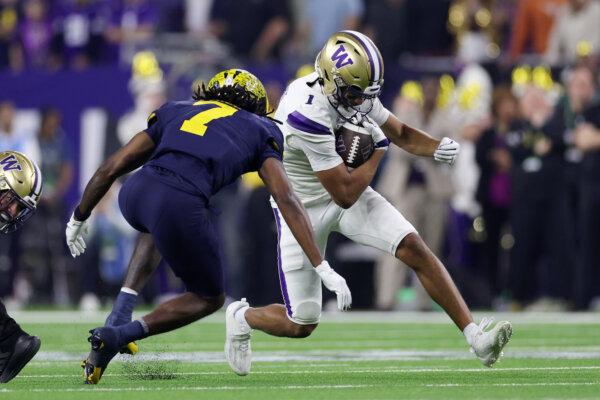
Rome Odunze #1 of the Washington Huskies runs the ball in the second quarter against the Michigan Wolverines during the 2024 CFP National Championship game at NRG Stadium in Houston, Texas, on Jan. 8, 2024. (Maddie Meyer/Getty Images)
All of this is part of a continuing seismic shift in college football over the past several years. The NCAA’s transfer portal not only allows, but basically encourages, unfettered movement among players. The advent of the “name, image, and likeness” rule enables college athletes to earn money, in some cases more than they would make by turning professional. And the breakup of long-traditional groupings of schools, most notably the Pacific 12 Conference, has left many fans, and others, longing for the good old days.
“What we have now is not college football—not college football as we know it,” retired University of Alabama Coach Nick Saban told ESPN on Feb. 21. “You hear somebody use the word ‘student-athlete.’ That doesn’t exist.”
Mr. Saban, of course, should know. Having led the Crimson Tide to six national championships and Louisiana State to another before stepping down and becoming a university advisor after last season, he will go down among the greatest coaches in college football history.
By tripling the number of teams involved, the College Football Playoff will morph from a two-week endeavor in the four-team era to a competition that will stretch four weeks. While the four top-ranked teams will receive opening-round byes, the other eight face the prospect of playing four post-season contests. College football schedules, which once included only 10 games per team, now could number as many as 16.
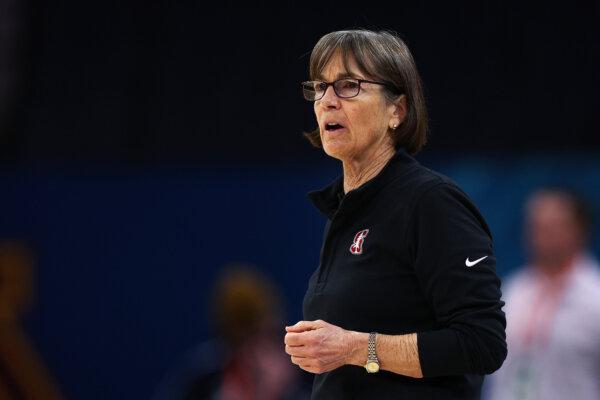
Head coach Tara VanDerveer of the Stanford Cardinal looks on during a practice session with the team at Target Center in Minneapolis, Minnesota, on March 31, 2022. (Elsa/Getty Images)
More playoff teams, of course, bring not only more games, but more television revenue.
“I think it’s greed,” Stanford women’s basketball Coach Tara VanDerveer told California Insider in October.
The third-ranked Cardinal, the Pac-12, and women’s basketball, which is riding an unrivaled surge in popularity, are all prime examples of those caught in the crosshairs of college football chaos.
“First of all, we know that women’s basketball had nothing to do with what happened, with the implosion of the Pac-12,” Ms. VanDerveer said. “It’s all football, football money, and television—just going after television money. It doesn’t seem to make a whole lot of sense, from my perspective, for any sport except football to be doing what they’re doing.”
With USC, UCLA, Oregon, and Washington leaving the Pac-12 to join the Big Ten Conference, and Arizona, Arizona State, Colorado, and Utah bound for the Big 12 beginning this fall, Stanford and Bay Area rival California had little choice but to basically beg for inclusion in the Atlantic Coast Conference.
Oregon State and Washington State, meanwhile, are left behind as what amounts to a “Pac-2,” clinging to the notion that perhaps the once-proud conference can somehow be rebuilt.
Basketball, baseball, and other collegiate teams, not only those formerly in the Pac-12 but also others in far-flung conferences across the country, now face the prospect of ridiculously demanding travel schedules.
Stanford at Duke in Durham, North Carolina, would no doubt be a great matchup in academia, but for a college softball game on a Friday afternoon or a women’s basketball contest on a Saturday night?
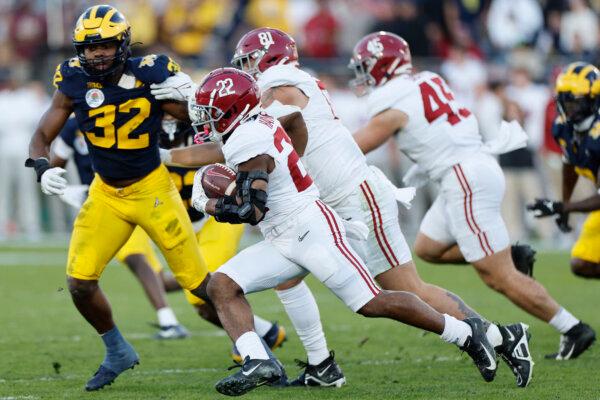
Justice Haynes #22 of the Alabama Crimson Tide runs with the ball in the third quarter against the Michigan Wolverines during the CFP Semifinal Rose Bowl Game at Rose Bowl Stadium in Pasadena, Calif., on Jan. 1, 2024. (Kevork Djansezian/Getty Images)
Like college football players whose time for studies will be further minimized during a monthlong national-championship bid, student-athletes in other sports will be challenged like never before.
“It just seems counterproductive,” said Ms. VanDerveer, who nonetheless is “very excited” about competing in the traditionally rich basketball landscape of the ACC. “It would have been worse for us not to have a league, for us not to be in a conference.”
Like the folks at Oregon State and Washington State, as well as optimists in other locales, Ms. VanDerveer is holding out hope that, a further expanded College Football Playoff or not, sanity might yet somehow prevail.
“When it’s all said and done, I think this will shake out in a couple of years,” she said.
